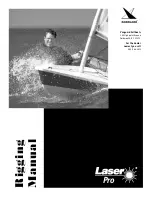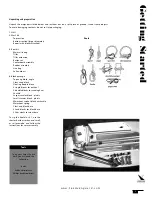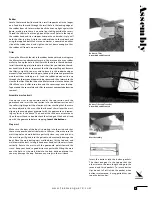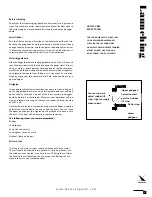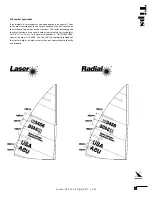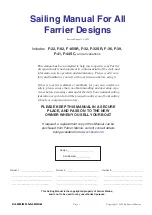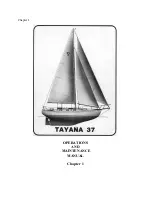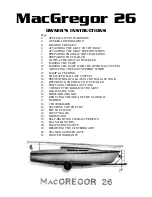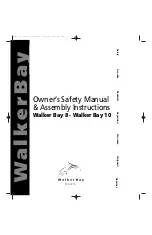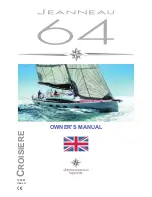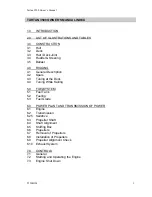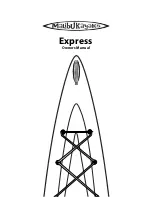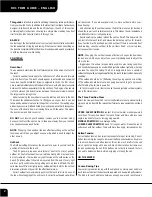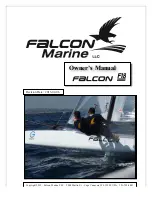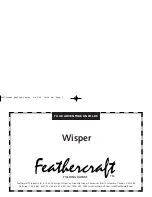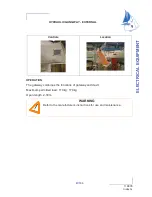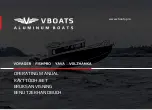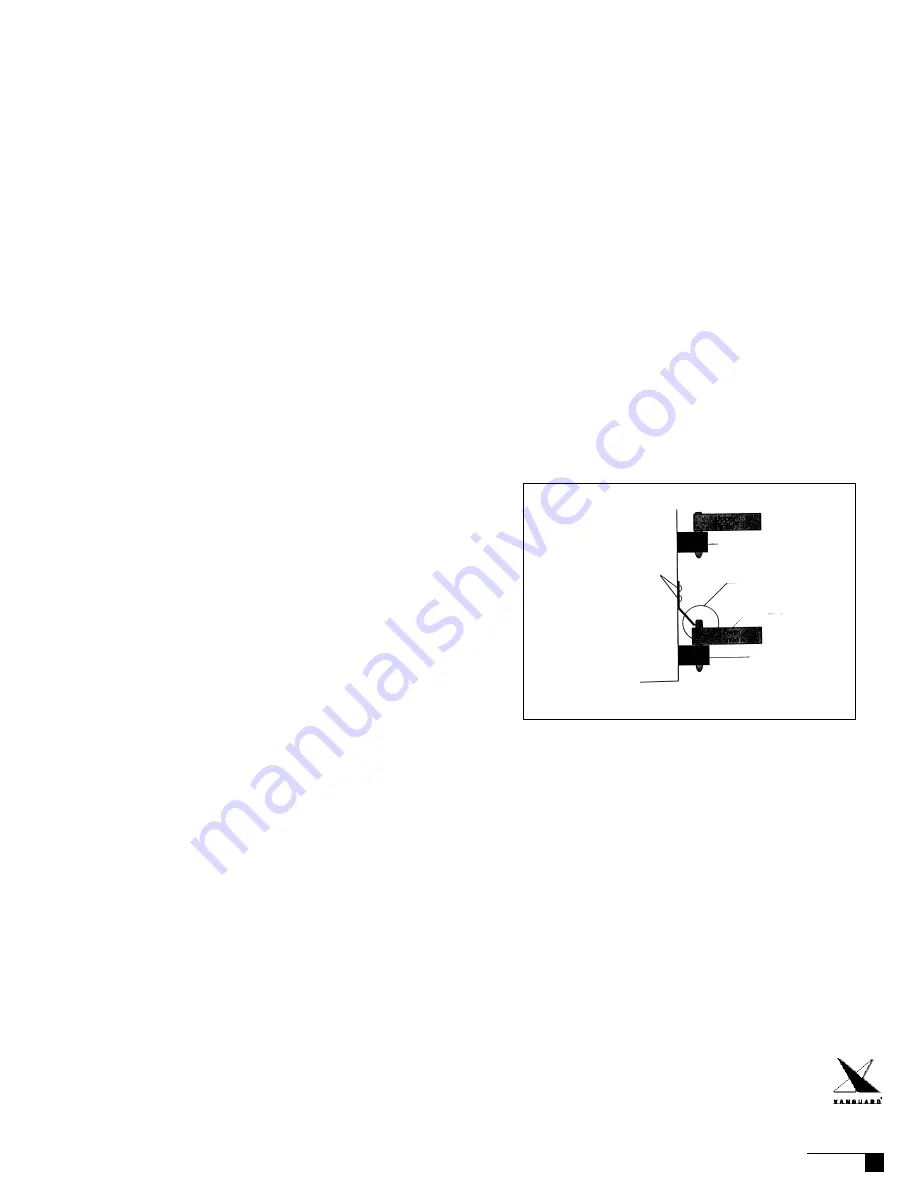
w w w . t e a m v a n g u a r d . c o m
5
Launching
Before launching
Check that the two drainplugs (cockpit and transom) are in place and
tight. The automatic bailer should be closed. Move the boat close to
the water’s edge or launch before installing the rudder and dagger-
board.
Install rudder
Pass the tiller under the aft section of the traveler and slide the rud-
der onto the gudgeons. Keep the rudder up until the water is deep
enough to extend it down, and then tighten the downhaul and cleat
it. Make sure the rudder stop prevents it from lifting off the boat; if
necessary, bend the stop out so that it fits as shown below.
Install daggerboard
Slide the daggerboard into the daggerboard trunk. (You will have to
turn the boat sideways to the wind to keep the boom clear.) Drop it
down as much as depth permits. Lead one end of the shockcord for-
ward through the bow strap and hook the brummel hooks together;
this prevents the board from falling out in the event of a capsize.
Properly tensioned, the shockcord will help keep the board at a
desired height.
Unrigging
As you approach shallow water when you come in from sailing, pull
up the daggerboard part way, untie the rudder downhaul, and pop
up the rudder. After you hop out of the boat, remove the dagger-
board and place it in the cockpit. Make sure your mainsheet will run
free, and release the vang. To remove the rudder, depress the stop
and lift it off.
Once the boat is on land, remove the vang from the boom, undo the
outhaul and clew tiedown line, and unstep the mast. You can store
the boom on the boat; just tighten up the mainsheet to keep it with
the hull. If the boat will be traveling, remove the boom.
The following items can remain assembled:
Rudder
Centerboard
Vang (leave on mast)
Cunningham (leave on mast)
Outhaul (leave on boom)
Sail care tips
If sailing in salt water, all gear should be rinsed with fresh water.
The sail should be allowed to dry before it is rolled up. Make sure
the window is not creased if you fold the sail. Rolling the sail from
the head to foot will prolong the life of your sail. Rolling the sail
around the mast is not recommended.
NOW YOU ARE
READY TO SAIL
FOR YOUR OWN SAFETY, MAKE SURE
YOU ARE WEARING APPROPRIATE
CLOTHING FOR THE CONDITIONS,
AND PLEASE OBTAIN PROPER TRAINING
BEFORE SAILING. HAVE FUN AND
DON’T FORGET YOUR LIFE JACKET!
Loosen screws to
adjust rudder lift
stop. Tighten snugly
when correct.
Correct contact
point for rudder
lift stop.
Upper gudgeon
Pintle strap
Lower
gudgeon

